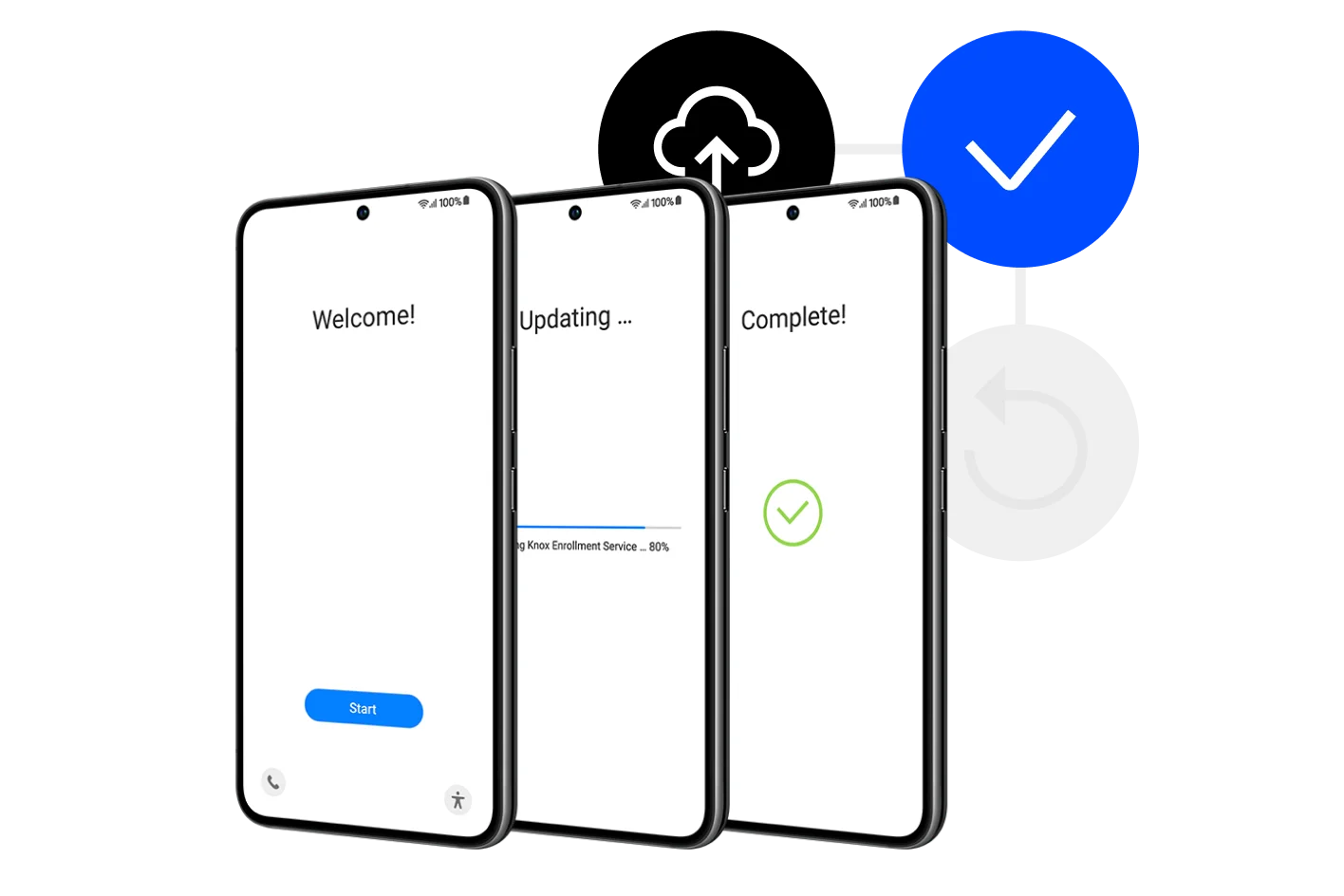Introduction
In today’s enterprise mobility landscape, automatic mobile device provisioning is essential for companies adopting MDM (Mobile Device Management) and EMM (Enterprise Mobility Management) solutions. Two of the main technologies available for automating this process are Samsung Knox Mobile Enrollment (KME) and Android Zero-touch Enrollment (ZTE) . While both aim to simplify onboarding and ensure compliance from the first use, they present important differences in terms of compatibility, functionalities and deployment flow.
In this article, we’ll explore in depth how each solution works, their advantages and disadvantages, and which one might be best suited to your corporate environment.
What is Android Zero-touch Enrollment?
Android Zero-touch Enrollment is a service offered by Google for compatible Android devices that enables automatic and remote provisioning of corporate devices as soon as they connect to the internet for the first time.
Main features:
- Compatible with certified Zero-touch enabled Android devices , typically running Android 9 or higher.
- Integrates with Google Android Enterprise and MDM platforms that support ZTE.
- Requires partnership with authorized resellers to register devices.
- Automatic provisioning via Wi-Fi or mobile network.
- Completely hands-free setup without end-user intervention.
What is Samsung Knox Mobile Enrollment (KME)?
Knox Mobile Enrollment is Samsung's alternative for its own devices. It offers similar functionality to Zero-touch, but with a richer ecosystem of control, especially when combined with the Knox Platform for Enterprise (KPE) .
Main features:
Exclusively compatible with Samsung devices (with Knox 2.4 firmware or higher).
- Support offline provisioning via QR Code and online via network.
- Allows for multiple profiles and more dynamic assignments.
- Integrates with MDM platforms that support KME.
- Allows for greater customization of the installation process and home screen lock.
Side by side comparison
Feature | Zero-touch | Knox Mobile Enrollment |
|---|---|---|
Compatible manufacturers | Miscellaneous (Samsung, Motorola, etc.) | Samsung only |
Minimum Android version | Android 9.0 | Android 7.0 with Knox 2.4 |
Authorized dealer | Yes, mandatory | Yes, but it can also be done manually via IMEI |
Offline provisioning | No | Yes (via QR Code or USB) |
Hands-free experience | Fully automated | Automated with screen lock options and customizations |
Security control | Limited to Android Enterprise | Amplified with Knox SDK/KPE |
Multiple profile support | Limited | Yes |
Integration with MDMs | Broad (supporting Android Enterprise) | Wide (with KME support) |
Additional licensing | No | May require KPE licenses |
Usability in practice
Zero-touch
Advantages:
- Ideal for companies that use devices from different manufacturers.
- Facilitates scalability with large volume of devices.
- Reduces the need for end-user training.
Disadvantages:
- Fewer customization options in the setup process.
- Requires purchase from approved resellers.

https://wiki.nomid.tech/en/Provisioning/Zero-touch
KME
Advantages:
- Provisioning can be done even offline (without Wi-Fi).
- Home screen lock until MDM enrollment is complete.
- Supports more advanced security scenarios via Knox.
Disadvantages:
- Limited to Samsung devices.
- Administrative interface may be more complex at first.

When to choose Zero-touch?
- When your company works with multiple Android manufacturers .
- If you already use Android Enterprise in a standardized way.
- For 100% remote deployments with a need for agility.
When to choose KME?
- If your devices are mostly Samsung .
- If you need offline provisioning or in environments without Wi-Fi .
- When you are looking for higher levels of security control with Knox SDK.
Tips for integrating with Nomid MDM
If your company uses Nomid MDM , you can enjoy the best of both worlds:
- Zero -touch can be used for automatic initial provisioning of Android devices from multiple brands.
- KME allows you to extend security and customization on Samsung devices.
Both can be integrated into the Nomid MDM dashboard to configure installation profiles, apply policies, and initiate real-time monitoring without requiring user action.
Conclusion
Both Android Zero-touch and Samsung Knox Mobile Enrollment are powerful solutions for businesses looking to simplify and secure the provisioning of their mobile devices. Choosing between one or the other should consider factors such as the device ecosystem , the level of customization desired , and the type of connectivity available at the time of delivery .
With a platform like Nomid MDM , you can integrate and manage both solutions, leveraging the strengths of each to best serve the needs of your business or your customers.
References
Discover how Nomid MDM can help you
Both Android Zero-touch and Samsung Knox Mobile Enrollment are powerful solutions for businesses looking to simplify and secure the provisioning of their mobile devices. Choosing between one or the other should consider factors such as the device ecosystem , the level of customization desired , and the type of connectivity available at the time of delivery.
Start Free TrialShare this article
Tags
- #kme
- #zero touch


